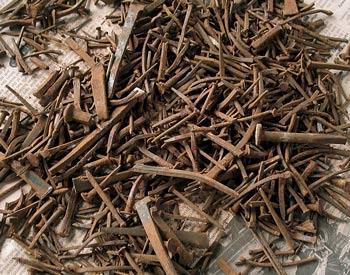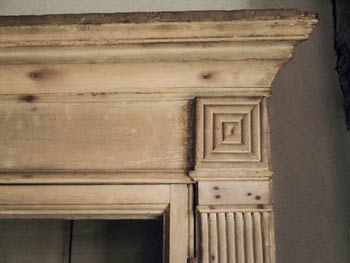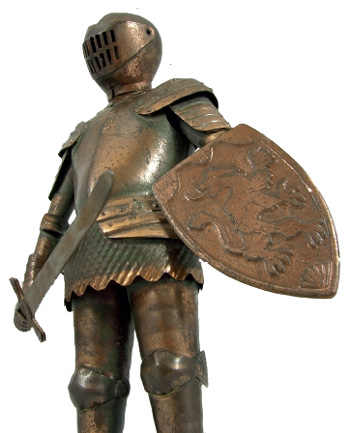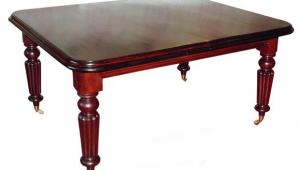Tooth and nail

The emphasis on traditional joint-making in fine furniture means that many people consider the use of metal fixings to be a modern and almost sacrilegious phenomenon. But such a romantic notion ignores the fact that they’ve been used quite legitimately in fine furniture for centuries, and in surprisingly large quantities, while ordinary mass-produced furniture since the middle of the nineteenth century has widely used metal fixings. So next time you’re using the Concept KTX screws, just remember that they’re merely the latest in a long and honourable tradition!
Screws have a shorter history than nails, but have come to be seen as more load-bearing. They first appeared in brass with hand-cut threads in the second half of the seventeenth century. As they were very expensive, their use was limited to the top end of the market, and they were still used in conjunction with nails for securing hinges of long-case clock doors well into the eighteenth century. Then came a bit of technological progress: brass and iron screws could be cut on a lathe rather than by fi ling. Although they became more plentiful, the cost didn’t fall dramatically until the appearance of standardised machine-made screws in the mid-nineteenth century.
If the use of screws in the so-called Golden Age of English Furniture, however, was commonplace, it was also discrete. The only difference now, then, is their visibility and acceptability as a design feature in their own right, just like those original medieval iron nails.

Decaying metal fixings can ruin an antique piece,
but removing them isn’t necessarily the answer
Firstly, do the fixings or the wood hold priority if something has to be sacrificed? If the screws securing the corner blocks of a nineteenth century chair are locked solid and likely to sheer, what do you do if you need to dismantle the chair to affect some other repair? Do you drill the screws out and save the braces or chop the braces away and (possibly) save the screws? All restoration implies some form of risk and my instinct is to minimise potential damage and loss, so in this case, I would sacrifice the screws, provided the braces were sound. But were the braces riddled with woodworm and crumbling away, I would sacrifice them and keep the screws for re-use. The second challenge is what you use to replace the screws and nails if they’re sacrificed or missing. You may think it rather sad to collect and recycle old nails and screws; I’ve managed to build up quite a collection, but if you like to get out more, my advice is to use the nearest modern equivalent. When it comes to size, err on the side of the screw being smaller, as an over-large head can stand too proud. New heads can be disguised with a dab of an appropriate earth pigment suspended in shellac if necessary. I always pre-drill for even the smallest pin to avoid splitting.
Thirdly, wood shrinks, and you may need to re-position screw holes. This is particularly important when re-assembling round or oval Victorian tables – the centre joint often springs because the top is secured rigidly with up to a dozen screws through the sub-frame. Unless the screw holes in the underside of the top are re-positioned, the same stresses will be set up and the joint will spring again.

- Log in or register to post comments






